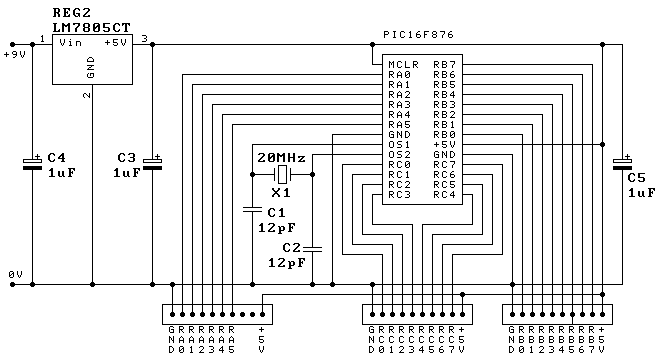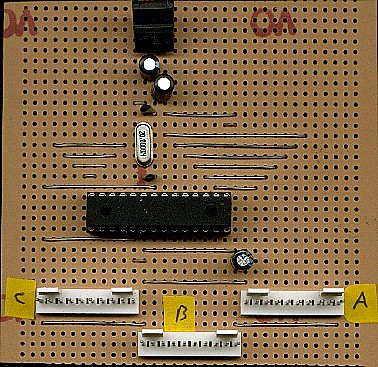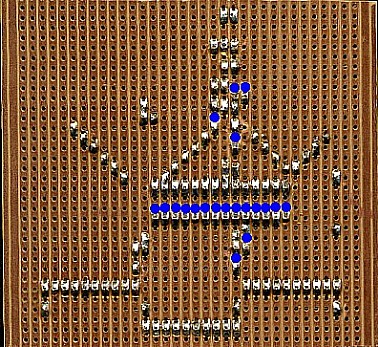PIC Tutorial Main Board Two
Main Board Two

![]() This
is the circuit of the second main board for the tutorials, it consists of the
PIC16F876, a 7805 regulator, a 20MHz crystal, 5 capacitors, three ten pin
connectors, one for PortA, one for PortB, and one for PortC . Each of the
three ten pin connectors is wired identically, with a ground connection at
the left side, and a 5V connection at the right - this will allow you to
plug the same extension board into any port, and help to demonstrate their differences
- the most obvious difference is that PortA only has 6 I/O lines, which
can be either digital I/O or analogue inputs, with 10 bit resolution.
This
is the circuit of the second main board for the tutorials, it consists of the
PIC16F876, a 7805 regulator, a 20MHz crystal, 5 capacitors, three ten pin
connectors, one for PortA, one for PortB, and one for PortC . Each of the
three ten pin connectors is wired identically, with a ground connection at
the left side, and a 5V connection at the right - this will allow you to
plug the same extension board into any port, and help to demonstrate their differences
- the most obvious difference is that PortA only has 6 I/O lines, which
can be either digital I/O or analogue inputs, with 10 bit resolution.
![]() Basically
it's very similar to the 16F628 tutorial board, but has an extra port and
added facilities - as the 16F876 doesn't have an internal oscillator a
crystal is required for the clock oscillator - I choose a 20MHz crystal
for this, if you can't get a 20MHz chip the 4MHz 16F876's seem perfectly
happy to run at 20MHz - I suspect they are exactly the same chip, and
graded to provide the two different versions.
Basically
it's very similar to the 16F628 tutorial board, but has an extra port and
added facilities - as the 16F876 doesn't have an internal oscillator a
crystal is required for the clock oscillator - I choose a 20MHz crystal
for this, if you can't get a 20MHz chip the 4MHz 16F876's seem perfectly
happy to run at 20MHz - I suspect they are exactly the same chip, and
graded to provide the two different versions.
 |
|
 |